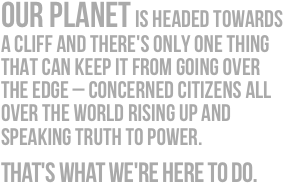-nathan thanki
So while the AWG-KP plenary is suspended for Parties to get their heads together, let’s have a little fun. Late one night in the first week a few of us were sitting round the table of Hippo Hide backpackers. Samuli came in shouting about final outcomes, and we decided to all write down our predictions and keep them for the final night.
Well that night is now upon us friends. Here are our predictions. They’re all pretty grim, so we’re hoping against hope to be way off the mark.
Nathan: KP-2 will go ahead, with no/little reductions. Some sort of GCF will get approved – an empty shell, and some big concessions for developing countries. The price of this is that LCA will yield a new mandate for a climate regime involving all countries. India and China will be blamed. TEC and Adaptation Committee could go through but will be undermined later.
Graham: LCA will give us mandate for bottom up approach involving China, India, US. There will be a political KP-2, with more markets. India will lead blocking and get blamed. Loss and damage work programme will go through, NAPs won’t, Adaptation Committee will be blocked by SICA, there’ll be no GCF, the Adaptation fund is empty. Africa will sell out.
Samuli: We’ll get a political KP-2. LCA will be concluded with a durban mandate, consisting of 3 pillars: mitigation, adaptation, poverty eradication. To be concluded by 2015. The GCF will be established.
Anjali: KP-2 will happen. the BAP will continue but with more parties doing pledge and review under LCA (2018-2020). Japan and Canada will be doing that. The shared vision will be weak. The GCF will get established, but with too much private sector involvement and a private sector facility. The TEC will be launched, also with much private sector involvement.
Ethan (from SustainUS): The LCA will go out the window. There won’t be a KP-2. But CDM will be around for a while. GCF won’t be operational. There will be a 2nd transitional committee to re-design the GCF.
Currently it looks bad. Really bad. There are three options.
1. Collapse. Copenhagen take 2.
2. COP17 bis. In 6 months or so we’d have a resumed session to try and get it right.
3. The Durban Mandate gets pushed through as is. It’s the end of the UNFCCC (and the world) as we know it.


